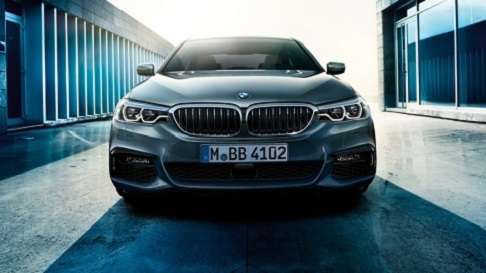Our tool for managing your permission to our use of cookies is temporarily offline. Therefore some functionality is missing.
THE BMW ELECTRIC CARS.
100 % electric. 100 % driving pleasure. 100 % BMW.
Join us to explore the world of BMW electric vehicles:
- Gliding almost silently through towns and over longer distances
- Spontaneous acceleration from a standing start
- Pure driving pleasure – free of exhaust fumes and local emissions
FIND YOUR BMW ELECTRIC CAR.
BMW iX.
- Up to 425 km electric range in accordance with WLTP (BMW iX xDrive40)
- Recharging for 10 minutes can add more than 150 km (BMW iX xDrive40 at high-power charging station)
- Power consumption (BMW iX xDrive40): 21.0–19.3 kWh/100 km (WLTP)
BMW iX M60.
- Two BMW M eDrive engines with intelligent all-wheel drive BMW xDrive
- Emotional sound designed by BMW M IconicSounds Electric
- Adaptive suspension with 2-axle air suspension and Integral Active Steering
- 455 kW/619 hp**, 0–100 km/h in 3.8 sec*
- Up to 566 km* range (WLTP)
BMW i4.
- Up to 590 km electric range (WLTP)
- Recharging for 10 minutes can add up to 164 km (high-power charging station)
- Power consumption of 19.1–16.1 kWh/100 km (WLTP)
BMW i4 M50.
- Up to 521 km electric range (WLTP)
- Recharging for 10 minutes can add up to 140 km (high-power charging station)
- Power consumption of 22.5–18.0 kWh/100 km (WLTP)
BMW iX3.
- Up to 461 km electric range (WLTP)
- Recharging for 10 minutes can add up to 90 km (high-power charging station)
- Power consumption of 18.9–18.5 kWh/100 km (WLTP)
BMW i7 xDrive60.
- Up to 615 km* electric range in accordance with WLTP (BMW i7 xDrive60)
- Recharging for 6 minutes can add 100 km (BMW i7 xDrive60 at high-power charging station)
- Power consumption (BMW i7 xDrive60): 19.7–18.9 kWh/100 km* (WLTP)
- BMW iX.
- BMW iX M60.
- BMW i4.
- BMW i4 M50.
- BMW iX3.
- BMW i7 xDrive60.
FAQ: THE MOST IMPORTANT QUESTIONS AND ANSWERS ON BMW ELECTRIC CARS.
What is an electric car?
![BMW electric car FAQ BMW e-mobility BMW electric car FAQ]()
A purely electric car (BEV, Battery Electric Vehicle) drives exclusively with electricity. It therefore has no combustion engine to power the vehicle. The electricity is stored in a battery. Its capacity determines the range of the e-car, in other words the distance that can be covered with one battery charge.
Purely electric cars are ideal for users who can charge electric cars at work or at home. At the same time, the extension of the public charging infrastructure is being pursued intensively. New charging stations are therefore appearing all the time in urban areas and along motorways.
What advantages does an electric car have?
An electric car offers an entirely new, emotionally charged driving sensation. Thanks to the torque available from a stand-still, you experience fascinating electric dynamics and spontaneous acceleration. At the same time, the almost silent electric engine gives you a new and relaxed driving experience.
When actually driving, a BEV is also emission-free (the term also used is “locally”) and thus offers maximum protection for our environment.
Additional benefits of BEVs are the highest category of country-specific subsidies and tax incentives that they entail.What factors affect the performance of the high-voltage battery in my electric car?
A significant external factor that influences the performance and capacity of a battery is the temperature. You may have noticed the same thing with your mobile phone battery. Very cold temperatures can limit battery performance in particular. It is similar with your electric vehicle. However, our optimised performance strategies minimise the effect that temperature can have.
And did you know that the capacity of the battery also provides information about your remaining range? In addition to temperature, the range is influenced by other factors that affect how fast energy is consumed, such as the use of air conditioning, the current load, and your driving style.
If you ever need to recharge while away from home, your BMW electric vehicle will be preconditioned for the DC charging point* at your destination, which means the high-voltage battery is brought to the optimum operating temperature by the time you get there. This increases the maximum power while charging and reduces the amount of time you need.
* Only relevant for BMW electric vehicles.What do I have to consider if my electric car is left standing still or parked for a longer period of time?
If you don’t plan to use your vehicle for a longer period of time, such as during a holiday, there are various ways to positively effect the lifespan of your battery. Whenever possible, maintain a charge of between 30 and 50 per cent and park your vehicle in a cool place or in the shade during summer months and keep it in a garage in the winter. In addition, the vehicle should not be plugged in for charging if you leave it parked for a long period of time.
EXPLORE THE BENEFITS OF THE BMW ELECTRIC CARS IN THESE VIDEOS.
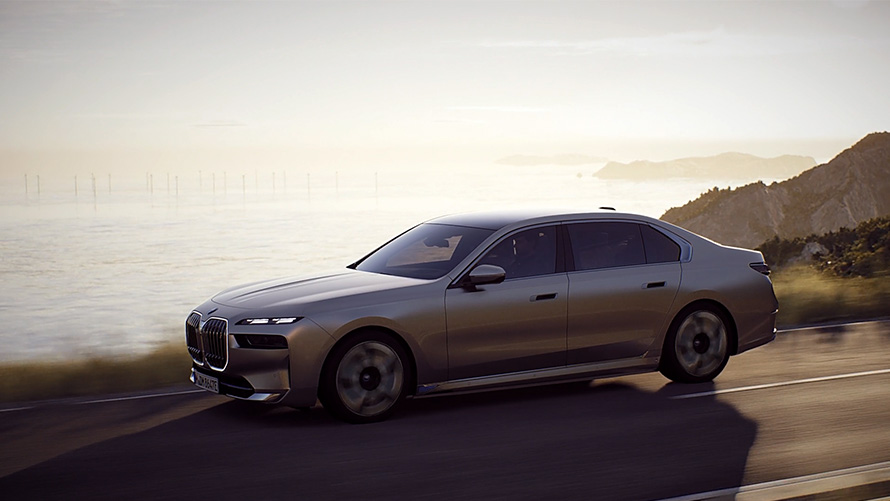
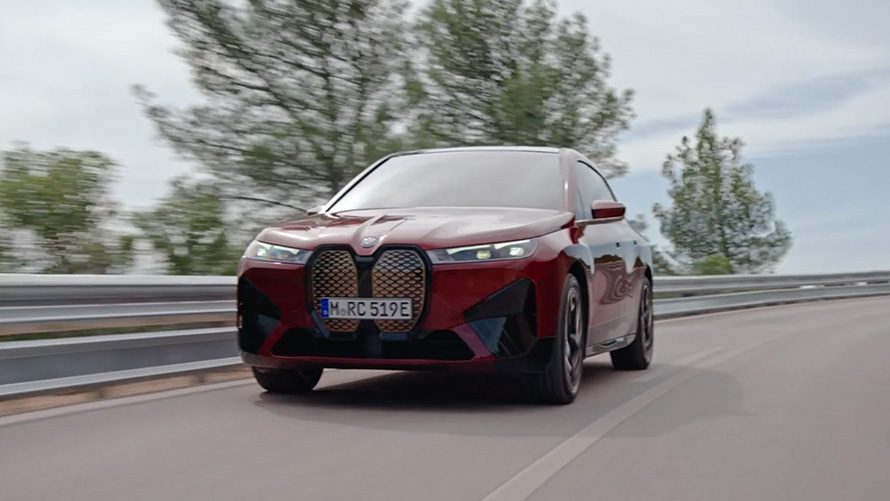
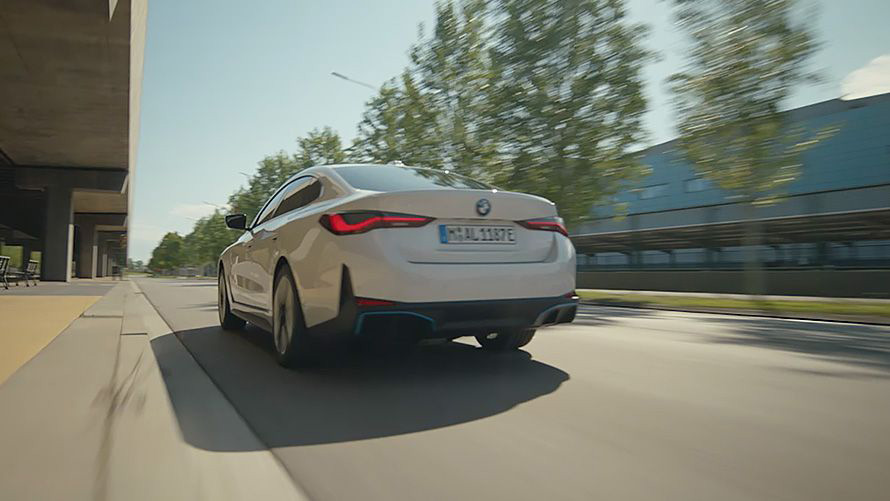
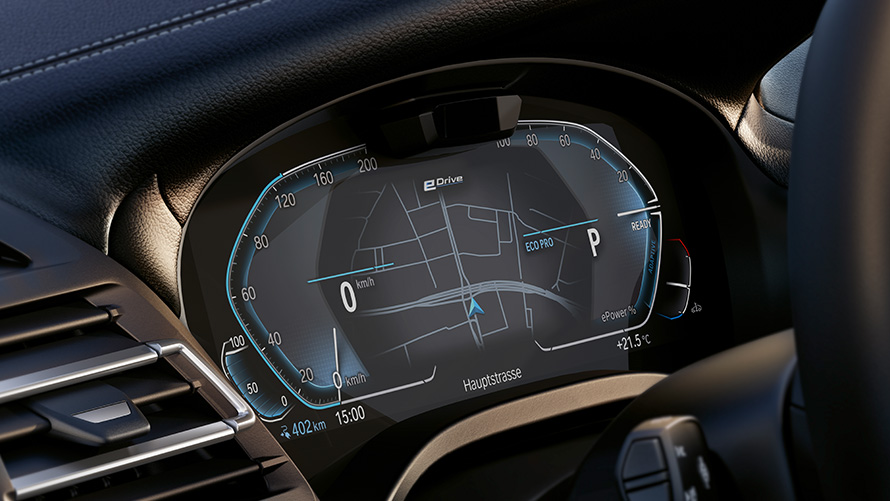
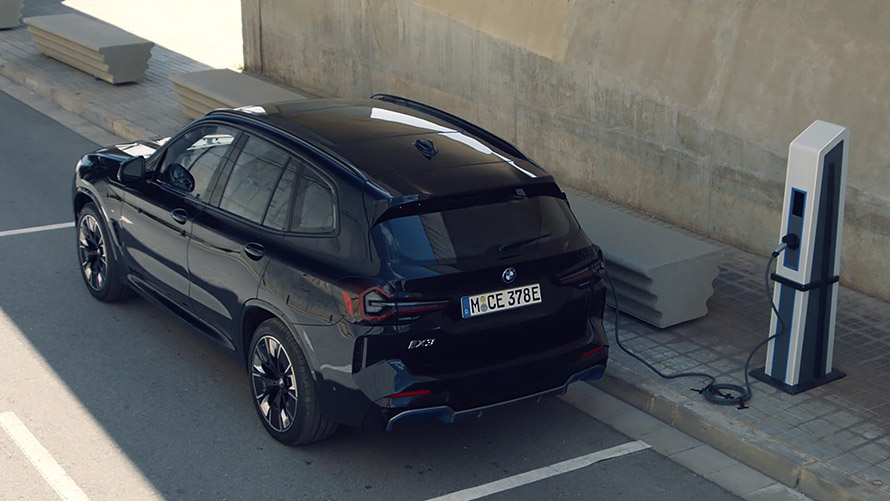
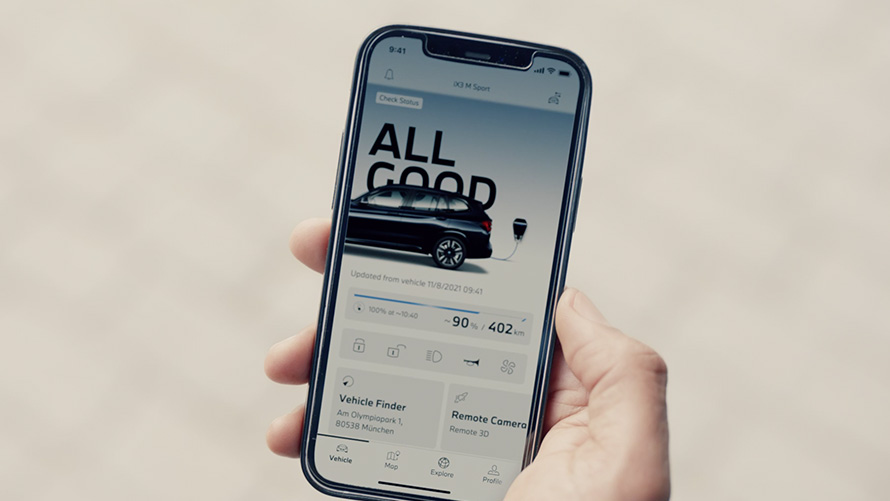
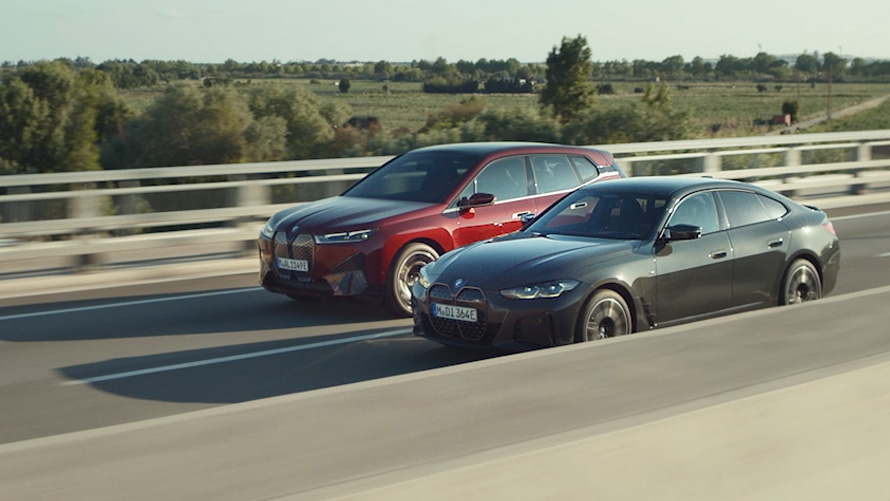
Driving Dynamics in the new BMW i7.
Powerfull electric performance.
Electrifying driving pleasure.
BMW eDrive technology of the fifth generation.
High Voltage Battery.
My BMW App & BMW Charging.
Ultimate driving pleasure.







DISCOVER THE RANGE OF YOUR BMW.
FAQ: QUESTIONS & ANSWERS ABOUT THE RANGE OF BMW ELECTRIC CARS.
Why do the ranges vary?
The respective range of an electric vehicle depends on various factors such as driving style, route conditions, vehicle equipment, weather conditions and payload.
How does my driving style affect the range of my electric car?
As is the case for a vehicle with a conventional combustion system, driving style also affects the range of an electric car. As a general rule, an anticipatory, relaxed and consistent driving style optimises your range. If, for example, you reduce your speed on the motorway, you can noticeably increase your range as a result. During recuperation, that means whenever you lift your foot from the accelerator pedal, kinetic energy is converted into electrical energy and fed into the battery – and you gain further kilometres in range.
What factors influence the range of an electric car?
High average speeds (highway) reduce the range most significantly, while inner-city traffic leads to a higher range due to lower speed and higher recuperation shares (in contrast to vehicles with internal combustion engines). Furthermore, the range is reduced at low temperatures due to heating, and high temperatures with strong air conditioning. Regarding the special features/equipment, the selection of larger tire combinations generally reduces the range (if the aerodynamic disadvantage is not compensated for by a more closed wheel design). The rolling resistance class of tires is also relevant for the range: e.g. the use of a winter tire reduces the range compared to a Label A summer tire.
General range specification and range values in this indicator.
In the model selection, the communicated range is based on the WLTP (Worldwide harmonized Light-Duty Test Procedure) cycle.
WLTP enables a calculation of the range under prescribed driving conditions. WLTP assumes a defensive driving style with a route mix of city streets, country roads and highways.
The range indicator enables you to estimate the range under your typical driving conditions. The outer circle represents the calculated range value based on linear distances (not the actual street map), while the inner circle shows the calculated value –30% to take the real-life routes into account.
FAQ: FREQUENTLY ASKED QUESTIONS ABOUT LEASING AND FINANCING OF ELECTRIC VEHICLES.
What are the benefits of leasing or financing an electric vehicle?
Leasing:
- The customer does not have to take care of the re-marketing of the electric vehicle after the leasing contract has expired.
- The customer can order various services such as Service Inclusive on top.
Financing:
- The customer is the owner of the electric vehicle.
- The customer can finance the electric vehicle over a longer period compared to leasing.
Is insurance included within an electric vehicle leasing or financing?
Within leasing yes, within financing no > however, there is the option of taking an insurance through the BMW insurance partner.
Are there government incentives for the leasing of financing of electric vehicles available?
Country-specific. Most countries offer now state subsidies for electric vehicles. In addition to the state, additional municipal subsidies are often offered.
Are there tax advantages for the leasing of financing of electric vehicles?
Country-specific. Yes, in some countries tax benefits such as the elimination of vehicle tax are offered.
Does BMW offer a leasing or financing with no down payment?
Country-specific. In most countries, leasing or financing agreements are possible without a down payment.
Electric consumption and CO2 emissions.
BMW iX xDrive50:
Power consumption in kWh/100 km (combined): 26.6
CO2 emissions in g/km (combined): 0
BMW iX3:
Power consumption in kWh/100 km (combined): 18.9–18.5
CO2 emissions in g/km (combined): 0
BMW i4 M50:
Power consumption in kWh/100 km (combined): 22.5–18
CO2 emissions in g/km (combined): 0
BMW i4 eDrive40:
Power consumption in kWh/100 km (combined): 19.1–16.1
CO2 emissions in g/km (combined): 0
BMW i3:
Power consumption in kWh/100 km (combined): 14.2–12.9
CO2 emissions in g/km (combined): 0
BMW i3s:
Power consumption in kWh/100 km (combined): 14.7–12.9
CO2 emissions in g/km (combined): 0
The values of fuel consumptions, CO2 emissions and energy consumptions shown were determined according to the European Regulation (EC) 715/2007 in the version applicable at the time of type approval. The figures refer to a vehicle with basic configuration in Germany and the range shown considers optional equipment and the different size of wheels and tires available on the selected model.
The CO2 efficiency specifications are determined according to Directive 1999/94/EC and the European Regulation in its current version applicable. The values shown are based on the fuel consumption, CO2 values and energy consumptions according to the NEDC cycle for the classification.
For further information about the official fuel consumption and the specific CO2 emission of new passenger cars can be taken out of the „handbook of fuel consumption, the CO2 emission and power consumption of new passenger cars“, which is available at all selling points and at https://www.dat.de/e10/
